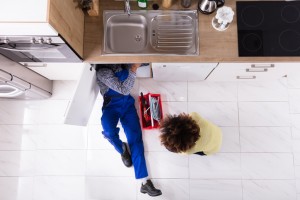It’s often not until the moment you need to call a plumber will you find out if your home warranty covers the wide variety of plumbing issues and its residual effects.
Damage repair can be expensive and calls for major work within the walls of your home. HomeAdvisor says the average cost to hire a plumber for a typical job ranges anywhere from $175 to $450. Add in the cost of parts and repair, partnered with a fee if the plumber is called outside normal hours, and you could easily spend more than $1,000 for a basic need.
Home warranties and plumbing
Home warranty plans vary, but those that offer plumbing coverage typically identify “emergency” scenarios as those eligible for a payout.
What is a plumbing emergency?
Read your home warranty carefully to understand what the company considers a plumbing emergency. Common situations include:
- Plumbing malfunction that causes flooding in the home
- Failure of plumbing system or appliance that causes ongoing damage
- Plumbing failure that is a health or safety concern
- No running water or toilet access in the home
Once you understand what types of plumbing issues are covered by the warranty, you then need to investigate if the damage caused by the problem is also covered.
For example, if a pipe bursts in your basement, floods the space and causes damage to your walls, flooring and furniture, you should know if the warranty covers just the cost to repair the pipe, or if it also includes the residual damage.
In many situations, your homeowners insurance will kick in to cover the aftermath, so examine both the home warranty and insurance documents to understand how to process your damage claim.
How to avoid plumbing emergencies
Lack of maintenance is the number one reason plumbing issues become emergencies. There are a number of inexpensive ways to inspect your plumbing and determine if a potential problem exists.
- Know the age of your system: If you recently purchased a home, make sure you know how old the pipes are and the material they’re made out of (copper, galvanized steel, and PVC are the most common).
- Inspect noises and clogs: Don’t allow a “small” leak or clog to continue. Handling the problem early will help you avoid major damage and costs in the future.
- Don’t flush unnecessary items: Only human waste and tissue paper should be flushed into your plumbing system. Anything else – even paper products – can cause severe blocks and shorten the lifespan of your pipes.
- Clean your pipes: Even if you’re not experiencing a clogged drain, using natural pipe cleaning methods, like baking soda and vinegar, keeps residue and other debris from settling in your pipes.
